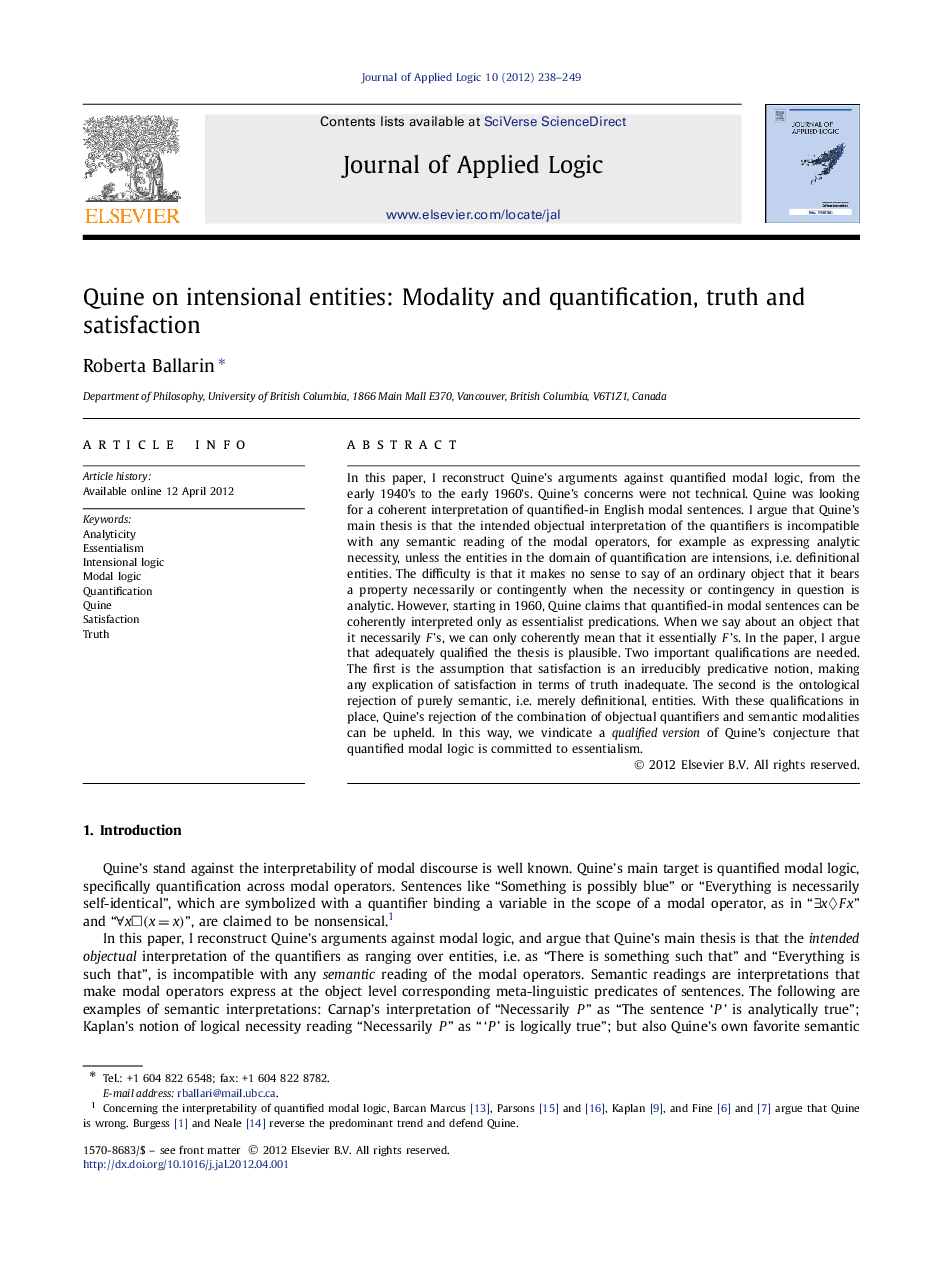| کد مقاله | کد نشریه | سال انتشار | مقاله انگلیسی | نسخه تمام متن |
|---|---|---|---|---|
| 4663052 | 1345223 | 2012 | 12 صفحه PDF | دانلود رایگان |

In this paper, I reconstruct Quineʼs arguments against quantified modal logic, from the early 1940ʼs to the early 1960ʼs. Quineʼs concerns were not technical. Quine was looking for a coherent interpretation of quantified-in English modal sentences. I argue that Quineʼs main thesis is that the intended objectual interpretation of the quantifiers is incompatible with any semantic reading of the modal operators, for example as expressing analytic necessity, unless the entities in the domain of quantification are intensions, i.e. definitional entities. The difficulty is that it makes no sense to say of an ordinary object that it bears a property necessarily or contingently when the necessity or contingency in question is analytic. However, starting in 1960, Quine claims that quantified-in modal sentences can be coherently interpreted only as essentialist predications. When we say about an object that it necessarily Fʼs, we can only coherently mean that it essentially Fʼs. In the paper, I argue that adequately qualified the thesis is plausible. Two important qualifications are needed. The first is the assumption that satisfaction is an irreducibly predicative notion, making any explication of satisfaction in terms of truth inadequate. The second is the ontological rejection of purely semantic, i.e. merely definitional, entities. With these qualifications in place, Quineʼs rejection of the combination of objectual quantifiers and semantic modalities can be upheld. In this way, we vindicate a qualified version of Quineʼs conjecture that quantified modal logic is committed to essentialism.
Journal: Journal of Applied Logic - Volume 10, Issue 3, September 2012, Pages 238–249